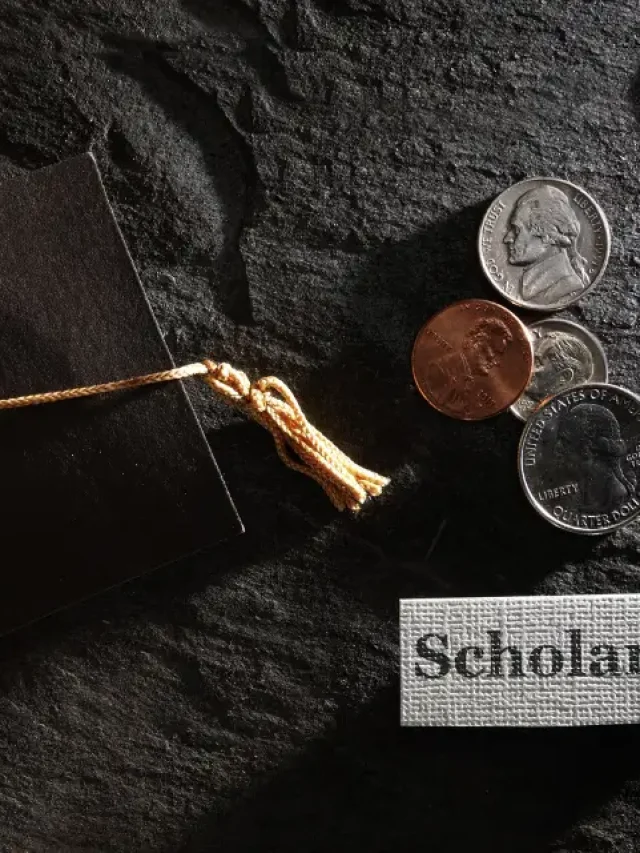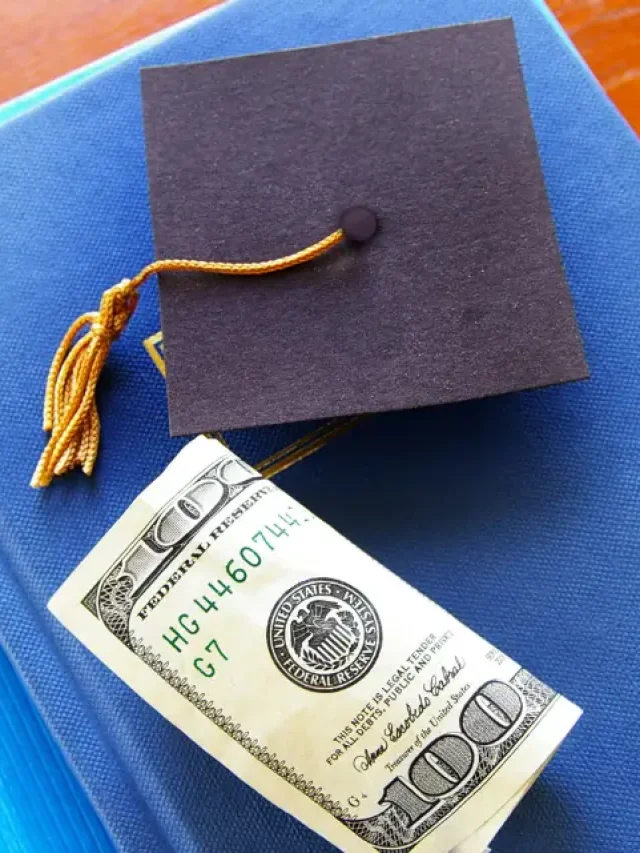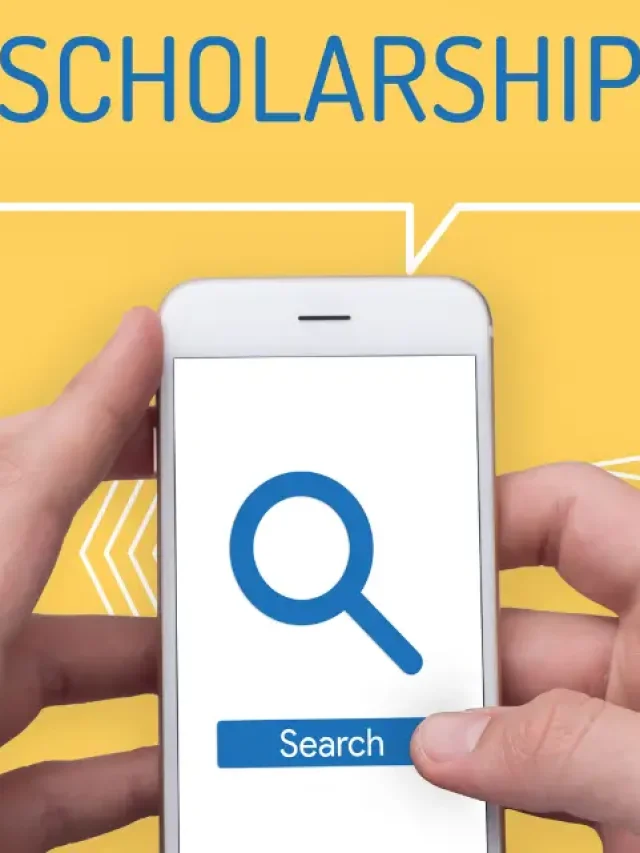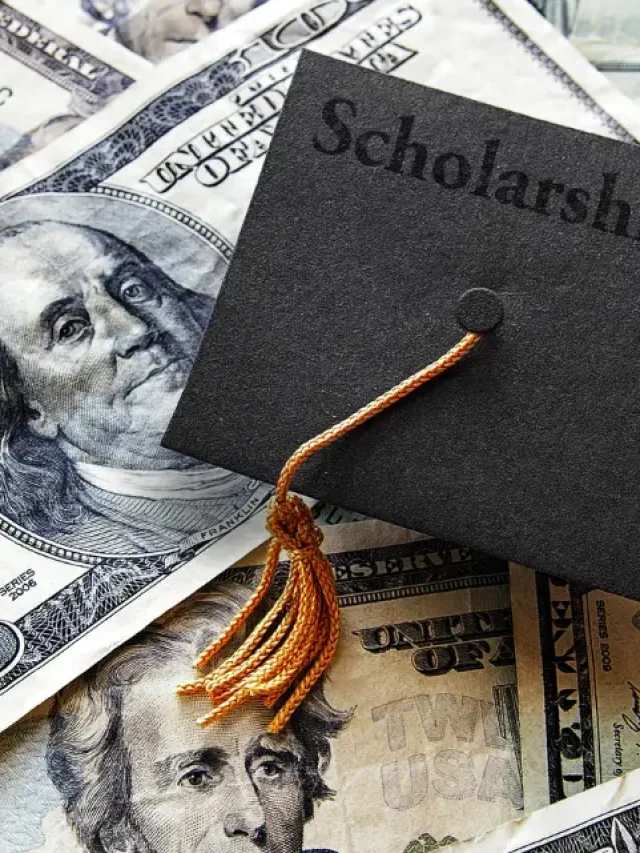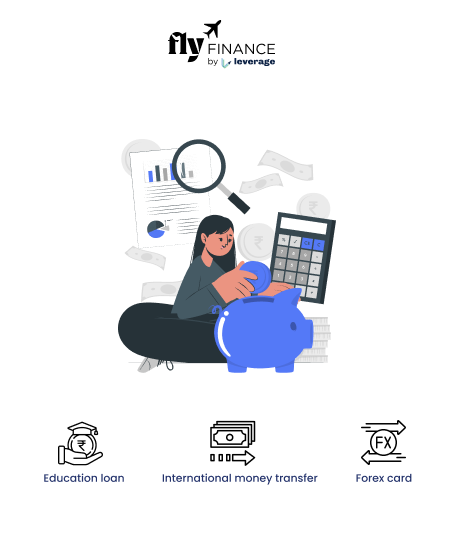Australia has become a preferred study destination over countries like the US and the UK, thanks to its high standard of living and world-class education. With university enrollment rates rising by 4-5% annually, the demand for student loans is also increasing.
International students must pay their full tuition fees before starting their studies in Australia, making financial assistance crucial. This blog will guide you through the key requirements for obtaining an education loan for Australia, along with a list of approved banks that offer student loans to international applicants.
Table of contents
- Cost of Studying in Australia: Crucial Factors
- Best Banks for Education Loans for Australia
- Eligibility Criteria For Education Loan for Australia
- List of Documents Required for Education Loan for Australia
- Application Process for Study Loan for Australia
- Cost Covered Under Study Loan for Australia
- Repayment of Loan
- Timeline for Australian Student Loans
- Indian Students Funding Requirements at the Australian Embassy
- Top Indian Banks Offering Study Loans for Australia
- Important Points to Consider About When Applying for Study Laon For Australia
- FAQs
Cost of Studying in Australia: Crucial Factors
To comprehend how much education loan for Australia is needed, it is important to consider the cost of studying in Australia, including the courses you will be taking, the institutions you will attend, the area in which you will be studying, and your living expenditures, particularly your lodging and travel expenses. Therefore, from the perspective of a future aspirant, the factors listed below are important.
Course Level and Tuition Fee
For various courses, higher education in Australia typically costs between AUD 34,000 (INR 16 Lakh) and AUD 40,000 (INR 21 Lakh) per year.
| Australian Degree Level | Approx. Costs |
| English Language Study | AUD 390 (INR 21,000) / week |
| VET (Vocational Education) | AUD 5,200 (INR 28,000) – AUD 28,500 (INR 15 Lakh) |
| UG Degree | AUD 19,400 (INR 10 Lakh) – AUD 42,700 (INR 23 Lakh) |
| PG Degree | AUD 26,000 (INR 14 Lakh)– AUD 48,000 (INR 26 Lakh) |
| Doctoral Degree | AUD 18,000 (INR 9 Lakh)– AUD 48,000 (INR 26 Lakh) |
Living Cost
You have a choice between living in a university residence or a shared apartment when figuring out the cost of housing and living while you are studying in Australia. A hostel will be much less expensive for you to stay there, though the price may differ from university to university.
However, travelling alone and staying in a homestay or rented apartment would be costly, especially if you visit an urban area like Sydney. Following are the living expenses in Australia:
| Accommodation | 90$ (INR 4700) -150$ (INR 7800) per week |
| Groceries and eating out | 140$ (INR 7691) -280$ (INR 15,000) |
| Utilities | 10$ (INR 549) -20$ (INR 1098) |
| Entertainment | 80$ (INR 4395) -150$ (INR 8240) |
| Transportation | A quick trip on a bus or rail, both of which are public transit options, can cost as little as 3 AUD. You can get weekly passes for 20AUD or monthly passes for 80AUD. |
Best Banks for Education Loans for Australia
Due to the high cost of higher education in Australia, students, particularly those from India, only have the option of applying for student loans. Indian students are typically charged INR 20–35 lakhs each year of study in Australian universities. Those who are unable to pay this sum in full must thus seek loans. You can apply for an educational loan in the following ways:
Indian Nationalised Banks
They typically provide students with collateral-backed educational loans up to 90% secured. The Indian Nationalised banks also offer lower interest rates, affordable processing fees, and no additional interest rate costs, which are all benefits of choosing it.
Applications may require longer processing times, and in such circumstances, a follow-up may be postponed. Let’s talk about the criteria that the Bank of Baroda uses to determine which Indian students qualify for education loan for Australia
They provide 100% funded loans for students admitted to top Australian universities such as:
- Monash University
- University of New South Wales
- University of Queensland
- University of Melbourne
- University of Sydney
- Australian National University
- University of Western Australia
- University of Adelaide
Eligibility Requirements
You must satisfy the following conditions to apply for a loan with the Bank of Baroda:
- A minimum set of KTs, or no KTs, should be present in the applicant’s profile.
- A CIBIL score of at least 650 is required for everyone who will serve as a co-signatory.
- The co-signer must also have sufficient discretionary income to cover the loan’s interest.
- Additionally, the property needs to be eligible for mortgages, unhindered, and with the appropriate paperwork.
Private Banks
The process of getting a loan through private banks in India is quicker than through nationalised banks. Better follow-ups are made, and a dedicated relationship manager is assigned to you. Private banks, on the other hand, frequently offer unsecured loans and have higher processing fees and interest rates. An applicant or student who obtains an unsecured loan is not required to pledge any assets as collateral. Unsecured loans are offered to students accepted to Australian colleges by private banks like Axis Bank and ICICI Bank.
- Axis Bank: Axis Bank offers unsecured education loans to students who have been accepted to institutions like Curtin University, James Cook University, La Trobe University, RMIT University, etc.
- ICICI Bank: Applicants for a loan from ICICI Bank must be accepted students at universities such as the University of Melbourne, the University of Adelaide, or the University of Queensland.
NBFC or Non-Bank Financial Companies
Thirdly, NBFCs offer educational loans to individuals who wish to further their studies in Australia. Many NBFCs offer loans to students based on final approval from the Australian High Commission, including HDFC Bank Credila, Auxilo, and others. Because direct penalties are received from the financial institutions managing this and they are reflected in the bank account as well, it makes disbursing tuition fees easier.
Eligibility Criteria For Education Loan for Australia
Focusing on finding the necessary cash for their educational expenses should be the priority for international students who have been admitted to the Australian universities of their choice. Australia’s tuition fees are comparable to those in other developed nations like the US and the UK and are higher than those in India. Students in India who want to pursue higher education in Australia can get loans from a variety of financial and non-banking companies. The fundamental requirements for applying for an Australian student loan are listed below:
- The candidate must be an Indian national.
- He or she ought to have been admitted to a reputable Australian university.
- The student must be registered in a course that the financing institution has approved (job-oriented professional degree, technical degree, and diploma courses)
List of Documents Required for Education Loan for Australia
For qualified students who want to pursue higher education in Australia, nationalised banks like the State Bank of India (SBI) offer education loans up to Rs. 30 lakhs. However, the borrower must provide several documents before the bank may process the loan amount (student). These comprise
- A university’s letter of admission
- Completely fill out the loan application form
- Docs about the cost of education
- Identification proof
- Evidence of residence
- Candidate’s PAN details
- Bank statements for the co-borrower, guarantor, and student
- Statement of assets for the guarantor, co-borrower, and student
- Income documentation from the guarantor, co-borrower, or student
Application Process for Study Loan for Australia
Students who want to study in Australia can apply for loans from Indian Nationalized Banks (Private and Government), or Non-Banking Financial Banking Corporations (NBFCs). For a seamless application procedure, students should work closely with bank officials, foreign admission offices, and visa offices. The following are the specific steps involved in applying for a loan for International Students in Australia:
- Before applying for an education loan in Australia, the applicant should select a banking institution.
- He/she should submit an application for a student loan together with initial KYC documentation, collateral documentation, and transcripts.
- The relevant Australian university shall additionally provide the student with an electronic Confirmation of Enrolment (eCoE).
- The Australian embassy in India should provide the applicant with confirmation of their student visa application.
- The following step is to submit the necessary paperwork to the banking institution in order to obtain a Loan Sanction Letter and a signed agreement.
- To obtain the Australian Student Visa, the applicant must complete further procedures and submit the Loan Sanction Letter to the Embassy.
- The university should then get the Australian Student Visa confirmation, which will confirm the information about the intake session and the payment plan. To begin loan distribution, these facts should be finally communicated to the bank.
Cost Covered Under Study Loan for Australia
An Australian education loan approved by a university may only be used for that university; it cannot be used to pay for personal costs. Some of the costs covered by the education loan for Indian students studying in Australia include:
- Tuition fees
- The cost of lodging
- Security deposit
- Travelling expenses
- Expenses for the academic year’s project work and study abroad trips
- Costs of books, office supplies, and laptop
- Additional acceptable course-related costs
Repayment of Loan
Students who have sought loans between Rs. 4 and Rs. 7.5 lakhs have ten years to pay back the entire amount. Students who received grants of more than 7.5 lakh rupees have 20 years to repay the full amount. However, students should be aware that the length of the moratorium period varies depending on the loan provider.
Timeline for Australian Student Loans
A student is often recommended to secure funds as soon as they receive their acceptance letters from colleges. After the necessary paperwork is completed, Indian government banks typically require 40 to 60 days to approve an education loan.
In general, the Australian Embassy favours applicants for student visas who have secured student loan debt. Students must submit various forms of collateral for secured loans. Therefore, students might need enough time to make arrangements for specific papers. You may estimate how long it will take a bank to grant you money for your international student loan by taking the following actions:
- Submitting a loan application and setting up the appropriate paperwork: 1-2 weeks.
- Mortgage creation: The loan funds will be distributed to applicants after this, which normally takes 2-3 working days.
- The candidate will receive the loan amount based on their preferences after the mortgage is created.
- As a result, students must apply for an Australian school loan at least 1.5 months before the time they actually require the money to be disbursed.
Indian Students Funding Requirements at the Australian Embassy
The Australian embassy demands that students deposit their money in a specific manner. Students must supply the specifics of the bank account that will receive payments for their tuition and health insurance prior to banks disbursing the loan amount.
What happens next after the lending bank has released the funds?
- Students must provide the payment receipt to the university following a successful transfer of funds from the bank to the school.
- The university issues a Certificate of Enrolment after receiving the payment, which is necessary for an Australian student visa.
- A “Hold” will be placed on transferring a student’s living costs to an Indian savings account.
- Although this transaction will show up in the student’s savings account, the student cannot make a transaction until the course starts.
Top Indian Banks Offering Study Loans for Australia
Indian banks, NBFCs, and private education loan experts offer educational loans for Australian students. Students who want to pursue their education in Australia can obtain loans from reputable Indian banks with interest rates ranging from 7% to 18%. Below is a list of some of the top Indian banks that offer student loans for study abroad in Australia along with the maximum loan amount:
| Bank Name | Maximum Loan Amount (in INR) |
| Union Bank of India | 15 Lakhs |
| Allahabad Bank | 20 Lakhs |
| Punjab National Bank | 20 Lakhs |
| Indian Bank | 20 Lakhs |
| Dena Bank | 20 Lakhs |
| State Bank of India | 20 Lakhs |
| Bank of Maharashtra | 20 Lakhs |
Important Points to Consider About When Applying for Study Laon For Australia
The majority of lenders of education loans also pay for Indian students’ living expenses while they are studying in Australia. The applicant’s financial capacity directly affects the Australian student visa application procedure. To study in Australia, Indian students must therefore obtain a loan, an international scholarship, or other sources of income. The following is a summary of some important considerations when applying for loans for International Students in Australia:
- Always verify that the student loan source will pay for OSHC Australia (medical insurance) costs.
- The applicant should ascertain whether the service for student loans is scholarship-adjustable.
- If a student obtains an Australian PR Visa, one should confirm whether the loan is still valid.
- Check the interest rates and guidelines for Indian government education loan subsidies for foreign study.
FAQs
Generally, students must provide proof of their first year’s tuition fees and living expenses for a visa. Most students opt for an education loan of INR 25-35 Lakhs.
Students can apply for education loans through government banks, private banks, or NBFCs. Commonwealth-funded students may qualify for HECS-HELP loans in Australia.
Generally speaking, in order to obtain a visa, students must provide proof of their first year’s worth of living expenses in addition to their annual tuition costs. The majority of students choose to borrow the whole amount from an Australian education loan. For study abroad education loans for Australia, our typical sanction ranges from 25 to 35 lakhs.
Yes, under Section 80E of the Income Tax Act, students can claim tax deductions on the interest paid for up to 8 years.
Interest rates vary, typically ranging between 8% and 12% per annum depending on the lender and loan type.
With the help of the HECS-HELP programme, qualifying Commonwealth-funded students can borrow money to pay their student sum. In addition to a few select private higher education institutions, all public universities provide HECS-HELP loans.
Yes, student loans completely pay the cost of college. However, only costs that fall under a specific cap will receive full coverage. If the costs exceed the cap, lenders have a buffer.
The following are some crucial details to be aware of while applying to Australian universities and obtaining a student visa: You can submit online applications through ImmiAccount. For subclass 500, there is a charge of about 630 AUD. For a single student, 62,222 AUD in proof of finances is needed.
Higher education in Australia may be expensive without enough planning and funding. Instead of staying away from Australia, getting an education loan can be a wise decision to minimize your study expenses. Additionally, great universities will provide you with promising work chances upon graduation, so you won’t need to worry as much about repayment after your studies are over.
To learn more about education loans, the best bank accounts for students, forex, banking experience for global students, or international money transfers, reach out to our experts at 1800572126 to help ease your experience with studying abroad.
Follow Us on Social Media


















